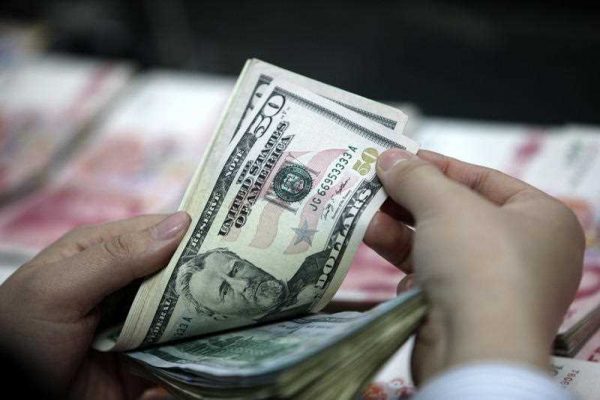The US dollar fell between early 2002 and July 2005, causing the RMB to also depreciate by 13–15 per cent against the basket of currencies representing China’s trading partners. The US dollar continued to depreciate, meaning that the RMB remained weak until early 2008, despite appreciating against the US dollar during that time.
Between 2002 and 2008, China’s current account surplus increased. In 2008, it had reached close to 10 per cent of GDP. The current account surplus and capital inflows led to the accumulation of a huge foreign exchange reserves (up to 40 per cent of GDP). These trends were caused by productivity gains in China and a weak RMB.
The PBoC loosened the peg to the US dollar in 2005, only to return to a fixed RMB/US dollar rate in 2008. In June 2010, the PBoC announced a new episode of ‘managed floating based on market supply and demand with reference to a basket of currencies’, but did not announce the composition of the basket.
Since June 2010, the RMB has steadily appreciated against the US dollar. This obviously gave an opportunity for speculators. The problem led the PBoC to widen the daily fluctuation band. In April 2012, the PBoC allowed the rate to fluctuate within ± 1 per cent of the set central rate; in March 2014 this was increased to ± 2 per cent. This has added to fluctuations in the RMB/US dollar rate on the market, even though the rate set by the PBoC has remained relatively stable.
But the actions of Chinese authorities have led to unintended consequences. The RMB hit a peak against a trade-weighted basket in March 2015, being 20 per cent stronger than when the managed float policy was first announced on 18 June 2010. However, it was not more than 9 per cent stronger against the US dollar than its 2010 rate. This meant that change of around 10 percentage points arose from changes in the cross rates of the other currencies, beyond the control of the PBoC.
So how should the PBoC manage the RMB in the future?
US economist Ronald McKinnon forcefully argued that an appreciating RMB and liberalised capital movements would have disastrous consequences for China. High potential growth in China keeps the expected rates of return high. If the RMB is made or allowed to appreciate, this will feed into expectations of further appreciation, which will then lead to large capital inflows. The boom will ultimately bust, and be followed by a long period of stagnation — like what happened in Japan.
While McKinnon’s arguments are valid, the RMB was obviously undervalued in the past and this partly contributed to China’s current account surplus. And his main proposal to keep the RMB/US dollar rate fixed needs to be reassessed.
Guonan Ma recently questioned the obsession with pegging the RMB to the US dollar. In its recent analysis the International Monetary Fund also takes the view that China should make rapid progress towards greater flexibility. The arguments for more flexibility against the US dollar are solid. But it remains open what exactly flexibility should mean. Interventions by the PBoC are still considered necessary for ‘avoiding disorderly market conditions and excessive volatility’ as the IMF puts it.
Managing the RMB with reference to a genuine broad basket with significant weights for the euro and the yen could be a suitable, intermediary regime. Chinese authorities are probably reluctant to take the risk of jumping to a free floating currency — both theoretical and practical arguments still speak in favour of gradualism and cautiousness when managing a transitional economy. Guonan Ma, as well as several other commentators and now the IMF, believe the RMB is currently fairly valued, so announcing the broadening of the basket could be done without any initial adjustment to daily rates. Thus, expectations of further policy-induced changes would be avoided. Because China is a large economy, this could also provide stability for its trade partners.
China could also further diversify the currency composition its foreign exchange reserves from the US dollar toward the euro and the yen.
The arguments for change are now stronger than ever. The euro fell dramatically in early 2015, hitting a trough in mid-March. Although it strengthened in April–May it is still 12–15 percentage points below its long-term historical average. It may even be the case that the PBoC is already shifting toward the euro. The appreciation of the euro since March may have been partly driven by demand for euro assets by a major player — the PBoC.
Heikki Oksanen is Adjunct Professor at the University of Helsinki, Finland. This article is based on the author’s working paper published by the CESifo in Germany.


Pegging the ROB with a basket of major currencies appears a sensible approach given China’s economic development and capital account regime.
While many economists may have stronger faith in the floating exchange regime, foreign exchange markets can exhibit excessive fluctuations showing bubbles similar to asset markets like stock and housing markets. Excessive make meets in foreign exchange markets may indicate some undesirability of complete floating.
Pegging to a basket of currencies increases stability and can reduce the degree of fluctuations.